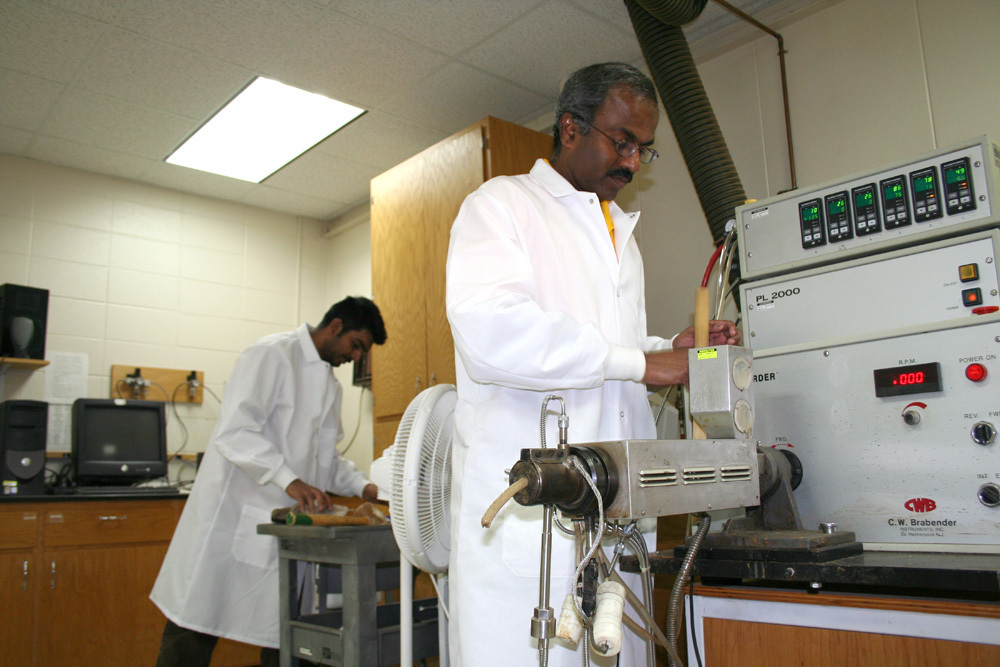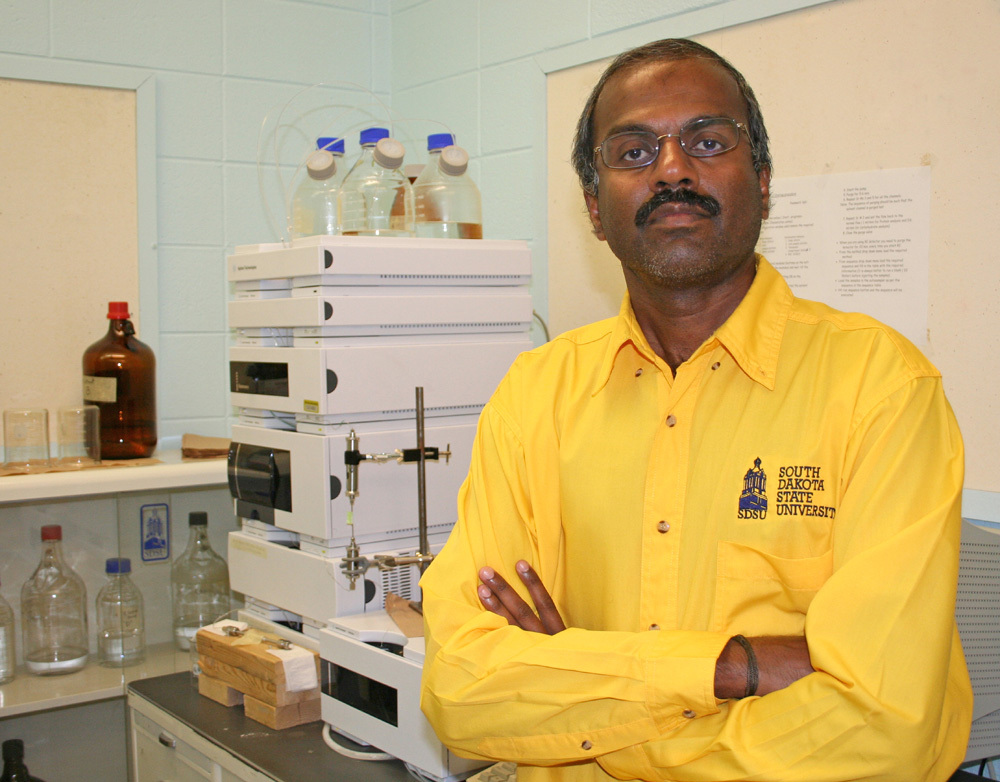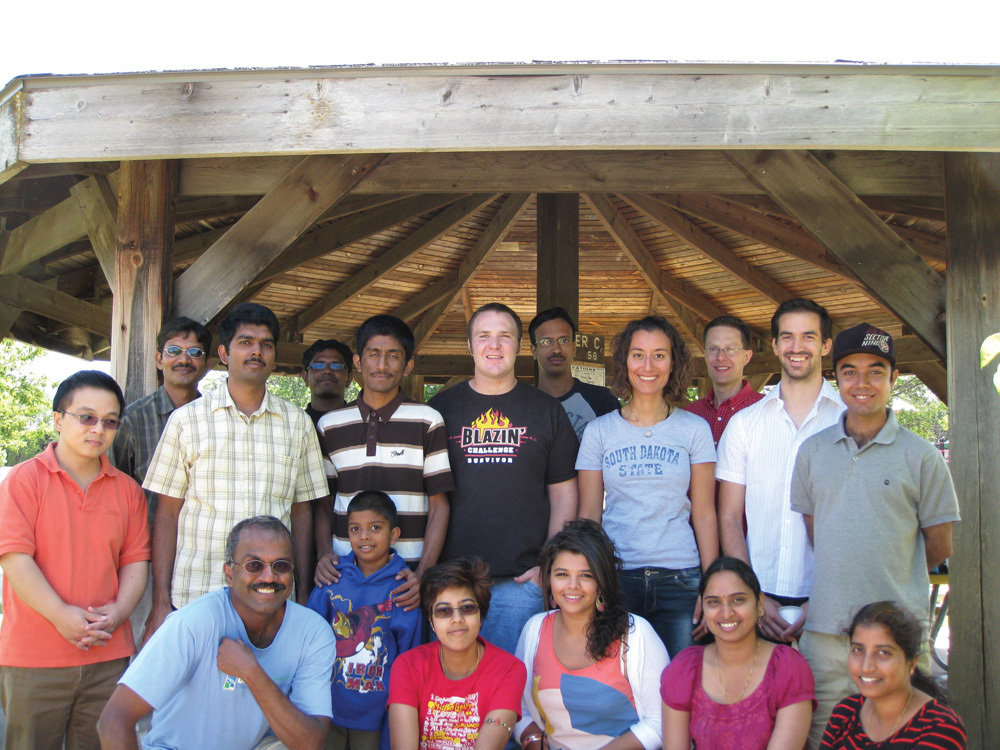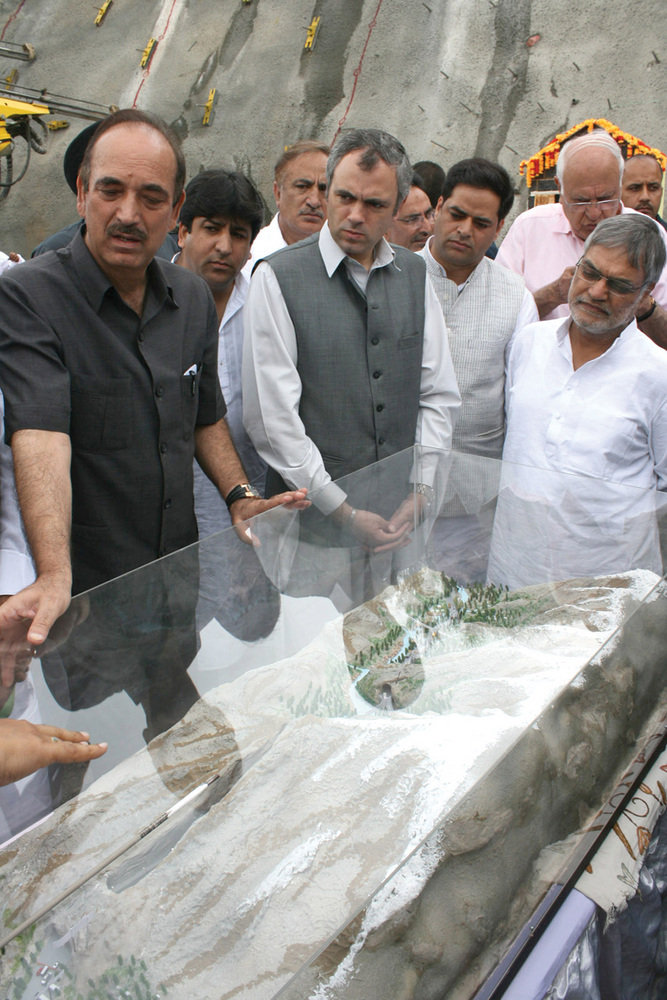Developing India






PHOTO: SDSU
August 16, 2011
BY Luke Geiver
Reports on global potential for clean technology, renewable energy or any other category that biodiesel might fit into, reveal an obvious fact: The maximum potential for the development, production or use of renewable energy in India, in this case biodiesel, is virtually unlimited. Most of us don’t need a report to tell us that India is a massively populated, rapidly developing nation that is fast catching up to the rest of the world in its quest and usage of energy. More specific information can be found in a report Novozymes commissioned this year that shows fuel demand in India will grow by 8.5 percent a year by 2020. Roughly estimated, a $100 barrel of crude would equate to $19.4 billion the country would spend on imported fuel. A report done by the Pew Charitable Trusts earlier this year examining global investment in renewable energy shows that, for the first time, India has entered into the top 10 countries of the G-20 nations that have invested clean energy dollars over the past year.
Combine all of those report findings with the high volume of diesel vehicles or the promising allure of a nonedible feedstock that can be grown on marginal lands from coast to coast, and it’s easy to see why India creates so much excitement and grandiose visions of future biodiesel production capacity. Unfortunately, however, no statistics on available acres suitable for jatropha, number of diesel engines required, or size of population in need of a safe, renewable energy source indicate the amount of time it will take to convert those big dreams into a significant biodiesel powerhouse.
To provide a more accurate picture of the biodiesel landscape in India, Biodiesel Magazine left the reports behind and spoke with individuals who’ve experienced first-hand what the country does, and does not, have to offer renewable energy producers. Their perspectives show us that big potential has meant very little to the country’s progression towards greater biodiesel or other renewable fuel usage. Their personal reports, however, indicate that there is still hope.
The Traveling Professor
When Biodiesel Magazine first spoke with Kasiviswanath Muthukumarappan (Muthu for short), professor of agriculture and biosystems at South Dakota State University, he was calling from a hotel room in China, well past midnight. Muthu is part of the innovative SDSU research team that has tackled everything from biomass handling to algae cultivation, and as his call demonstrated, Muthu is not afraid of spending time away from South Dakota, traveling to China, Italy, Indonesia and certainly, India. For our second conversation, Muthu called from Washington, D.C., where he was reviewing proposals to the USDA regarding food processing techniques.
Last year, he attended a first-ever biofuels conference in India and, since then, he says his inbox has been filled with requests to return. In addition to last year’s conference, he’s been to India several times looking for new collaborators. “We are trying to work through proposals and collaborations with China and India,” he says. But a seminar on biodiesel or other biofuels is vastly different in Atlanta than it is in India or China, he says. “It is very difficult to compare the trips. You aren’t comparing apples to apples,” he says. “It is different going to India.” While there is a lot of work going on in India and China in terms of biodiesel, according to Muthu, there isn’t as much in comparison to the U.S., Europe or Latin America.
“There is not much going on with biofuels [in India],” he says, “because there just is not much feedstock. They cannot collect feedstock at the higher amounts.” Although biofuels research is lacking, Muthu says of all biofuels, biodiesel gets the most attention as several research institutions are testing different oilseeds as feedstocks.
In addition to the research efforts in biodiesel throughout the country, Muthu also explains that during his visits to conferences or meetings, he’s not only linking up with other researchers, but also private companies. “I have some important contacts from those meetings,” he said. One of which is Praj Industries, a global EPC contractor and technology developer that has already signed on with U.S.-based Qteros to help in building a facility that would put the Qteros Q-microbe for cellulosic ethanol production to work.
Advertisement
As Muthu explains, though, it is apples to oranges when comparing a trip to Washington, D.C., with a trip to New Delhi. There is no lack of research happening in either country, but the logistics and necessities of feedstocks are vastly different, and have put the biofuels industry in India years behind the U.S. But, even with the differences, Muthu says his trips and time spent in underdeveloped places such as India are worth it. “They want to collaborate with us,” he says, adding that he is already working through a number of proposals for collaborations that would possibly send some of his students back to India to help tackle the issues of feedstock logistics and operating costs confronting the developing nation. “It could create a win-win situation,” Muthu says.
Indian Producer Tells All
If Muthu represents a perspective showing the type of work being done to develop India, then Sanjeev Gupta, president of Universal Biofuels, a 50 MMgy biodiesel facility in India, represents a perspective of what is already happening. Listen to Gupta, and all of the numbers from those reports start to seem misleading. When asked a general question on the state of biodiesel in India, Gupta replied, “Literally, nothing is happening.”
The Kakinada, India, plant, a wholly owned subsidiary of U.S.-based AE Biofuels Inc., was built in 2008 by Desmet Ballestra, and, according to Gupta, is only one of about six facilities remaining in the entire country. “We are still open because we are doing a little bit of this and a little bit of that,” Gupta says. “I’m trying to compete and wrestle with the Indonesian and European markets.”
From Gupta’s perspective, the general landscape for biodiesel production in India doesn’t reflect the promise of potential seen in those reports, but rather the reality of a dysfunctional government unwilling or unable to make good on promises that would significantly help the industry. First, he says, export regulations do not allow the country to export their product. As far as the domestic market is concerned, he says, “The problem here in India is that the government controls the refining and distribution of all petroleum products,” and, with the sort of emphatic tone to his voice that one could only take as a true feeling of concern, “it is a very corrupt system over here.”
Essentially, Gupta says, the government’s attempts to further the industry have been muddled due to that corruption. While the government has said it will give a tax break to fuel mixed with a blend of 5 percent or more biodiesel, that benefit has never been realized by Gupta or any other producer. The problem, he explains, is linked to the “tax guy,” who is unwilling to recognize a blended product. So, he says, “you pay the same tax (for a blended product) as you would pay on regular diesel. They are basically asking me,” he explains, “to call the biodiesel blended diesel, diesel.”
“This is not a developed nation so people don’t understand,” he says. There are scams coming out every day that Gupta says most people don’t even hear about. Because of that, “the government doesn’t have time to look at everything.”
Gupta hasn’t been one to sit idle in the face of a corrupt system that has virtually capped his ability to make a profit via biodiesel. He says he’s gone all the way to the top, which appears at first glance to clearly be in favor of renewable energy such as biodiesel. In 1987, the country established the Indian Renewable Energy Development Agency as a specialized financial institution to provide support for energy conservation and renewable energy projects. IREDA, a part of the Ministry of New and Renewable Energy, has since financed 1,921 projects reaching a $3 billion. The IREDA recently stated that “of late, the growing awareness and favorable government policies and regulatory mechanisms (both at the central and state level) have led to gradual increase in confidence of domestic commercial banks providing loans to renewable energy projects.”
Advertisement
But, for all that talk, Gupta says he cannot reach the traditional transportation market. “I’m basically catering to the fleet owners and the discretionary blenders and the industrial sector,” he says.
Because India is a net importer of oils, and palm oil is the cheapest, closest available feedstock, Gupta uses only palm oil. Waste vegetable oil (WVO) or used cooking oil isn’t even a viable prospect, he says, noting again the nation’s need for further development, and the fact that WVO is simply reused again and again until it’s totally consumed.
Of course, the obvious beacon of hope, something that could provide a viable, cheap feedstock is jatropha. Remember Gupta’s thoughts on the state of biodiesel activity in the country? He holds the same perspective for jatropha. Even with companies like Mission NewEnergy basing its business model on the toxic, nonedible plant in Gupta’s own India, he says, “Jatropha isn’t even a [pipe] dream now.”
So what, he says, if some researcher is trying to do some research, looking for a hybrid that can yield 2 to 3 tons of oil on marginal land. On marginal land jatropha won’t be able to meet those yields, he says, and the industry can’t wait the two to four years it will take to grow and develop the plant. “If somebody tells me they have a hundred acres, I’ll believe them, but that isn’t even enough for my one day's worth of production.”
Even though Gupta’s outlook on the biodiesel industry in India is bleak at best, and his stance on the savior feedstock jatropha is even worse, he does share some of the same sentiments of Muthu, and even those promising reports. The speed of research being done in the Americas, he says, is far ahead of India. But, if the U.S. comes up with a new technology or figures out algae, he says, “India will adopt it. India has a lot of sun and a huge coastline.”
As for a perspective rivaling those reports that indicate India is an untapped promise land for renewable energy, Gupta explains it this way. In the U.S., he says, when the tax credit went away, most figured it would come back and the industry would be strong again. That happened, he says. But in India, we just don’t know what will happen. But if a 5 percent mandate was actually enforced, or the tax situation was cleared up, “this is a huge market and we could all be running full capacity the very next day.”
Author: Luke Geiver
Associate Editor, Biodiesel Magazine
(701) 738-4944
lgeiver@bbiinternational.com
A View from Japan
Electric cars and government shortcomings won’t stop biodiesel here
The condition of ineffective governmental support and general lack of feedstock is not unique to India. Atushi Yoshiike of Revo International, Japan’s largest biodiesel producer, says that even though Korean and Chinese governments have committed to promoting the use of a mixed fuel made of biodiesel and petrodiesel, “there is a lack of feedstock oil in these countries." In both countries, he explains, there are tentative plans to increase the blend ratio from 1 percent to 3 to 5 percent within a few years.
His home country of Japan supports a B5 blend, but unfortunately, “there is no concrete plan in place," Yoshiike says. And, like Gupta, who said infrastructure supply issues make fueling the general transportation market with biodiesel very difficult, Yoshiike says “we are not able to use the existing infrastructure to supply biodiesel because the petroleum industry in Japan is blocking the spread of biodiesel.”
Yoshiike’s thoughts on Japan rival those of Yi-Fa Lee, the chairman of Chant Oil Corp., a biodiesel producing company based in Taiwan, who recently spoke about the Chinese government and its lack of biodiesel support in the Chinese newspaper, the China Post. Lee said the biodiesel industry was started by the government in 2006, but is now on the brink of collapse and is ultimately “in need of rescue.”
Much like Gupta, Yoshiike does see the potential of biodiesel in Japan based on the possible size of the market, even though he says similar changes are needed in his country as those Gupta says are required in his. “We face many difficult problems such as taxation and a lack of support for biodiesel,” he says, adding that with the growing popularity of hybrid engines and electric cars, “we believe that diesel engines will continue to be a popular engine all over the world.”
Upcoming Events





